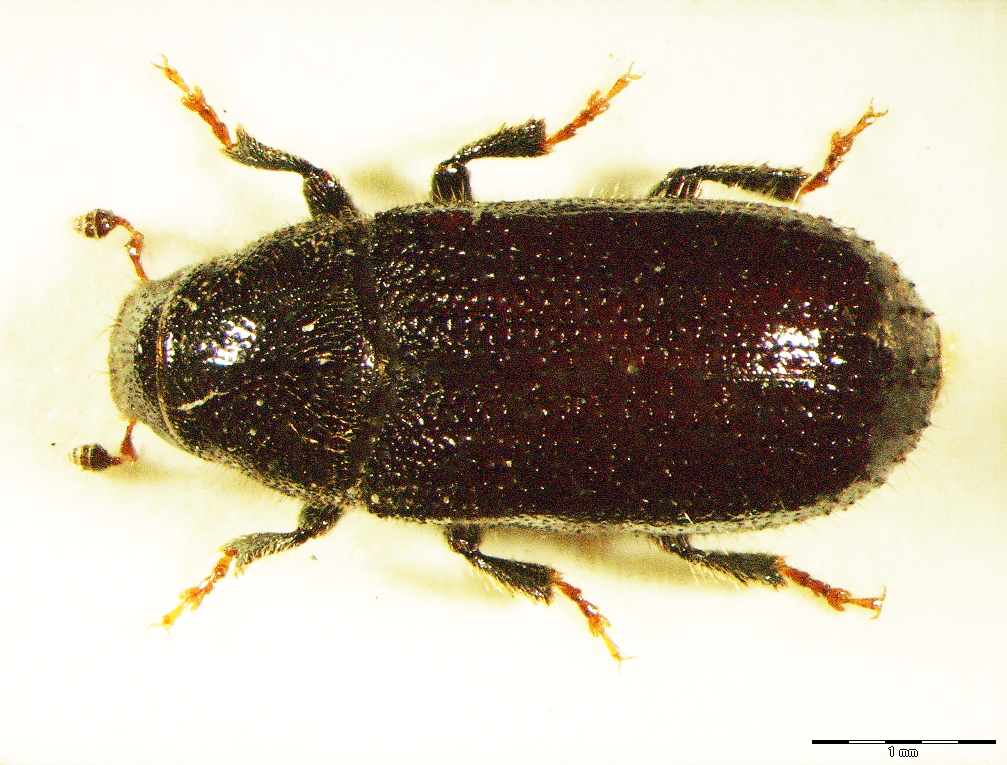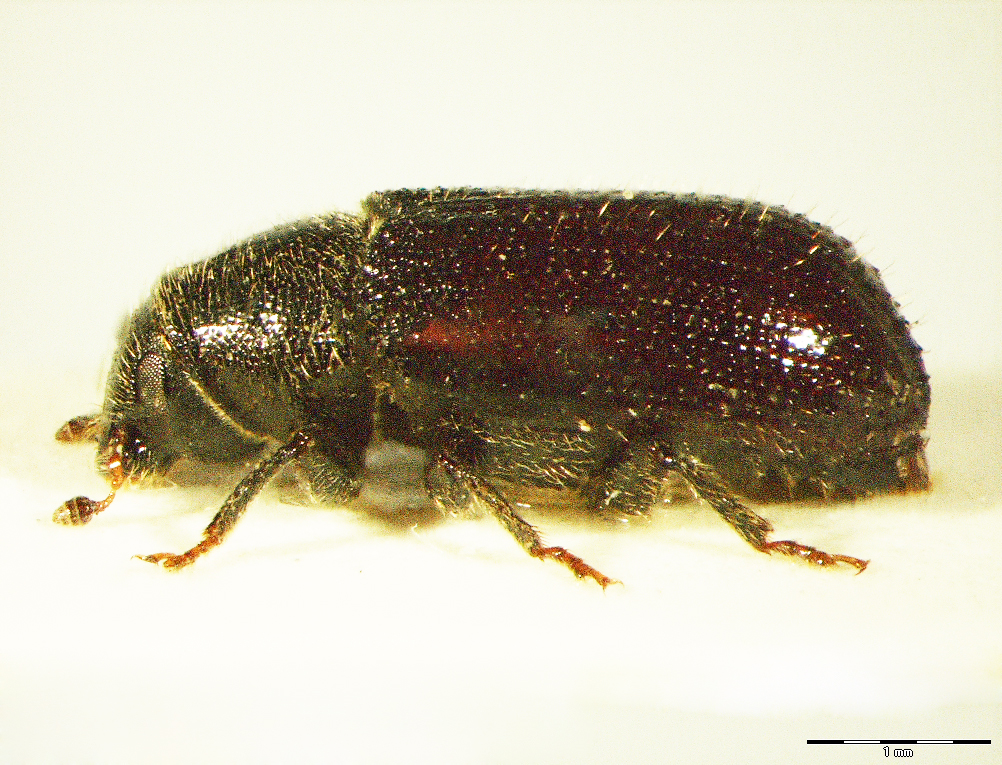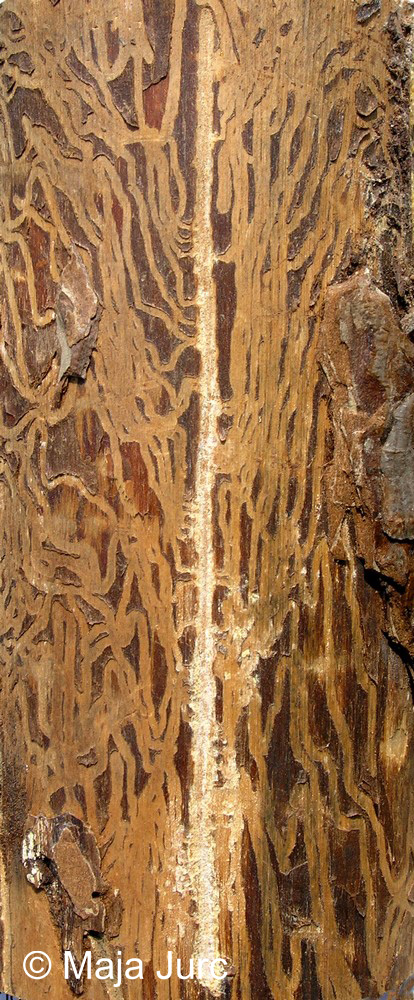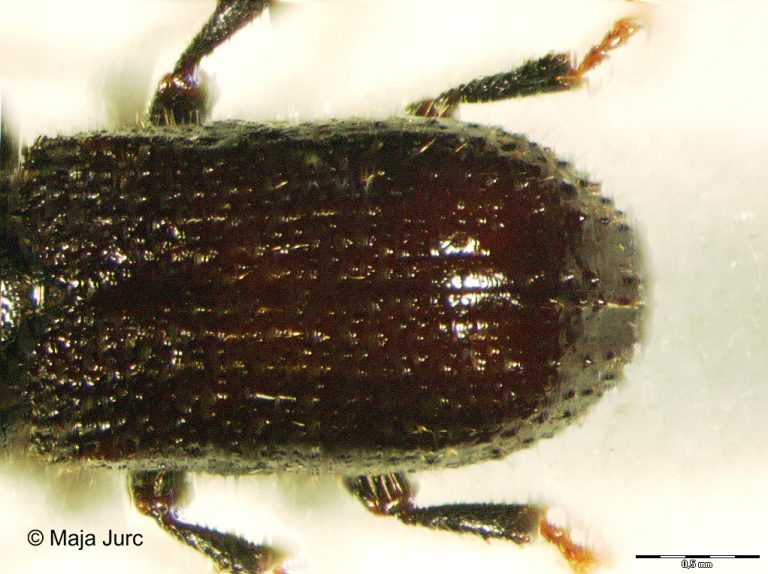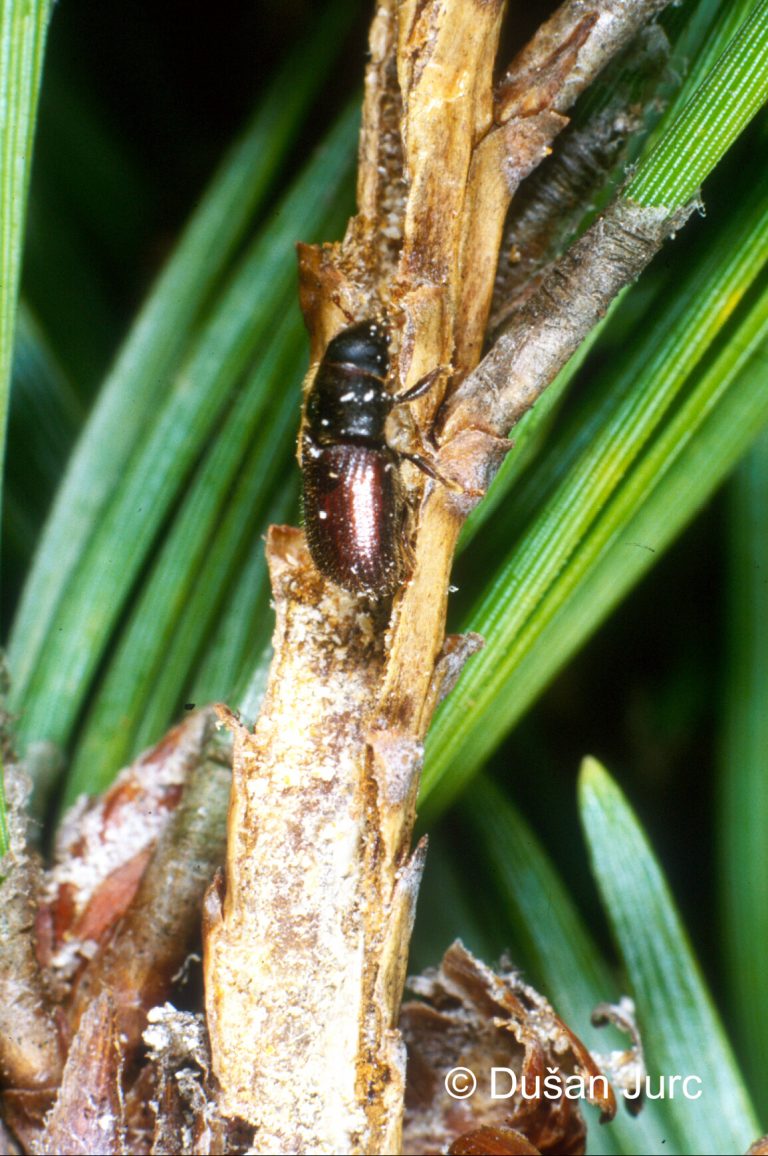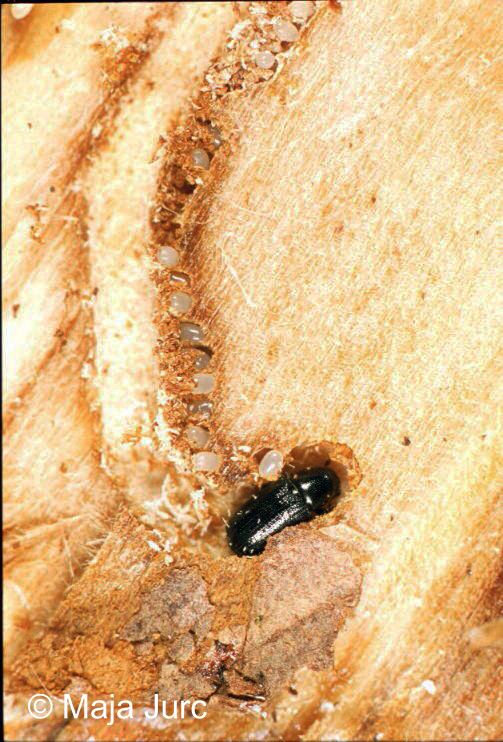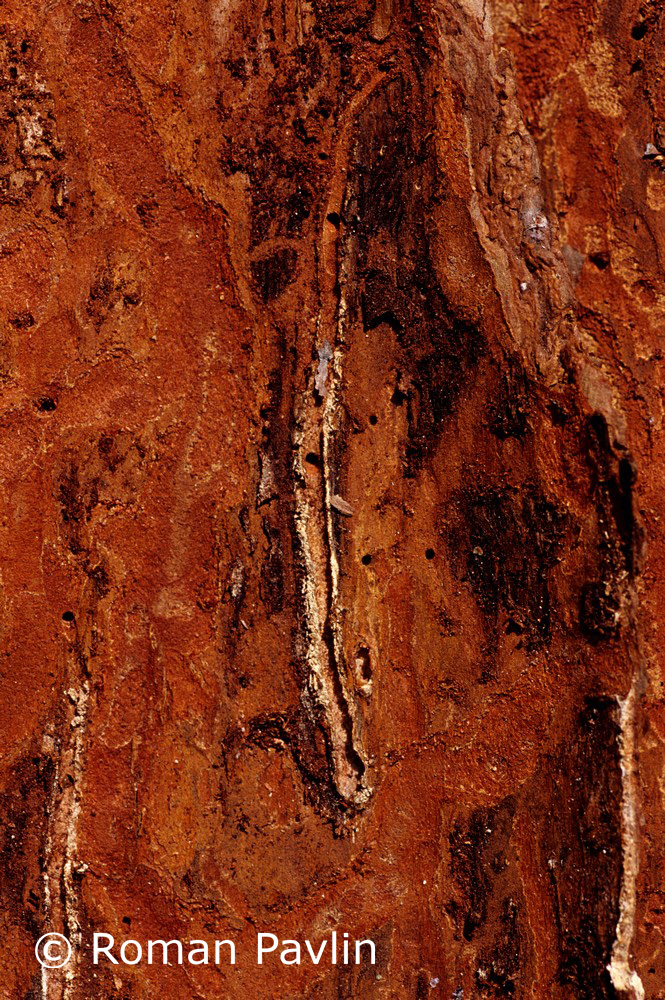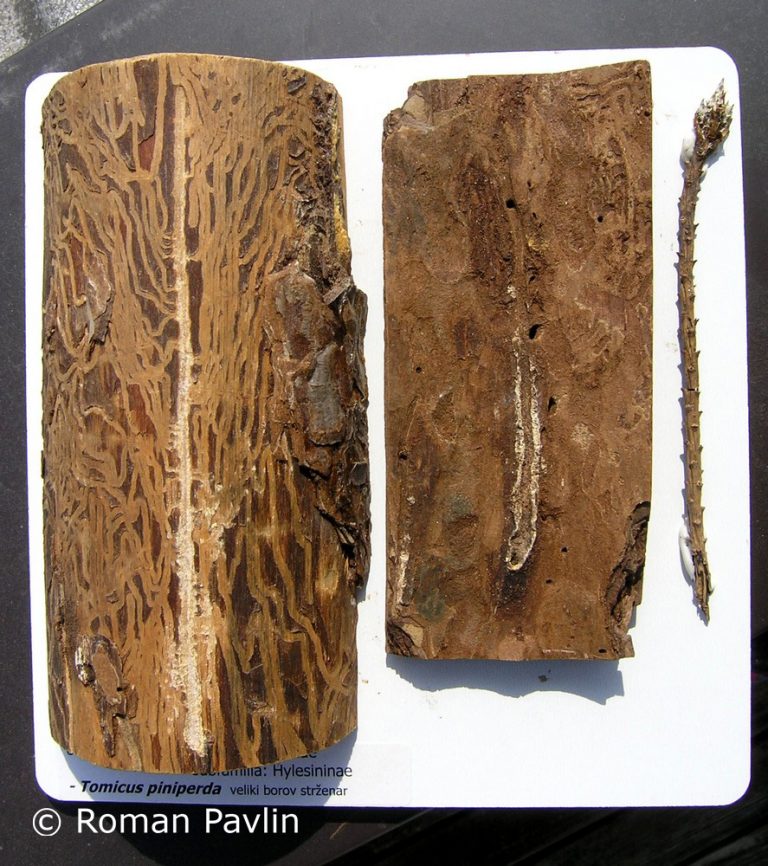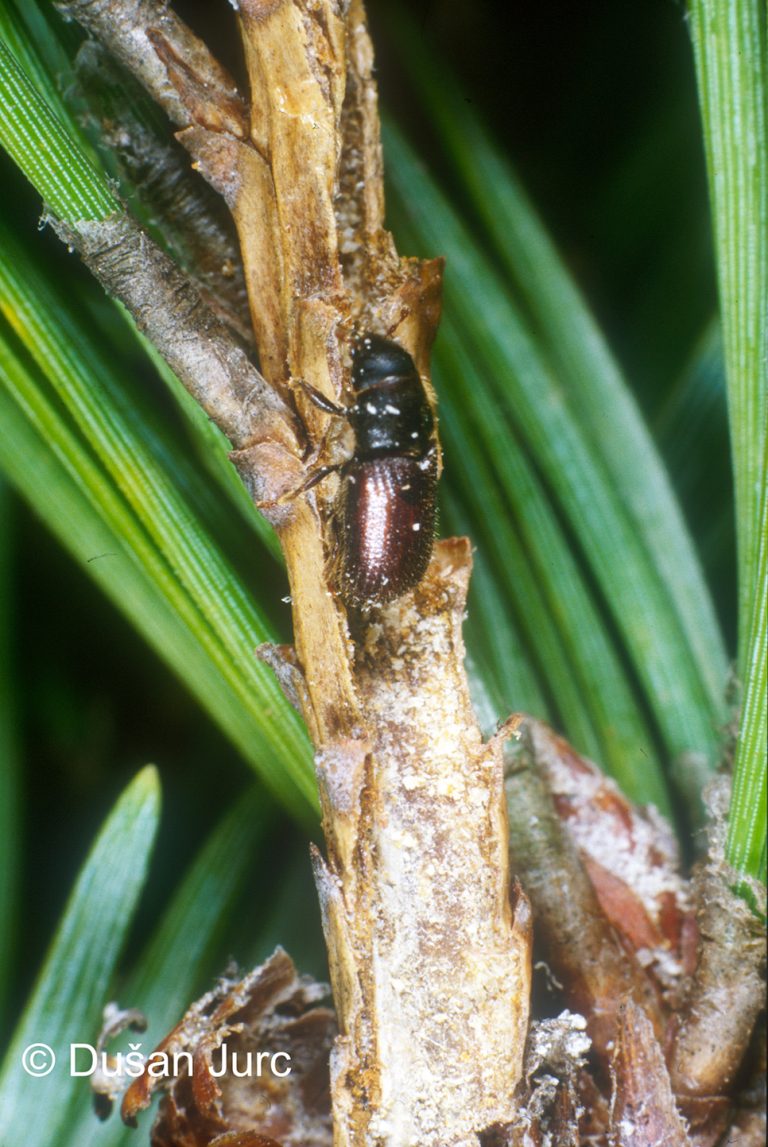09.03. Tomicus piniperda (Linnaeus, 1758)
Presence
E: AU BE BH BU BY CR CT CZ DE EN FI FR GB GE GR HU IR IT LA LS LT LU MC NL NR NT PL PT RO SK SL SP ST SV SZ UK YU
N: AG MO MR TU
A: ANH CY ES FE FUJ GAN GUI HEB HEI HEN HUB HUN IS JA JIA JIL JIX KZ LIA MG NC NMO QIN SC SCH SHA SHN SHX TAI TR WS YUN ZHE
NAR
ORR
Figure 44: Tomicus piniperda, dorsal, lateral (Photo: Maja Jurc)
Older catalogs and keys – citations of name
Siegel 1866: Hylurgus piniperda Lin.; Grüne 1979: Blastophahus piniperda (Linné, 1758); Freude, Harde, Lohse 1981: Blastophahus piniperda Linné; Titovšek 1988: Blastophahus piniperda (Linné); Pfeffer & Knížek 1993: Tomicus piniperda (Linnaeus, 1758); Pfeffer 1995: Tomicus piniperda (Linné, 1758) (Myelophilus piniperda Eichhoff, 1881; Blastophahus piniperda Eichhoff, 1864).
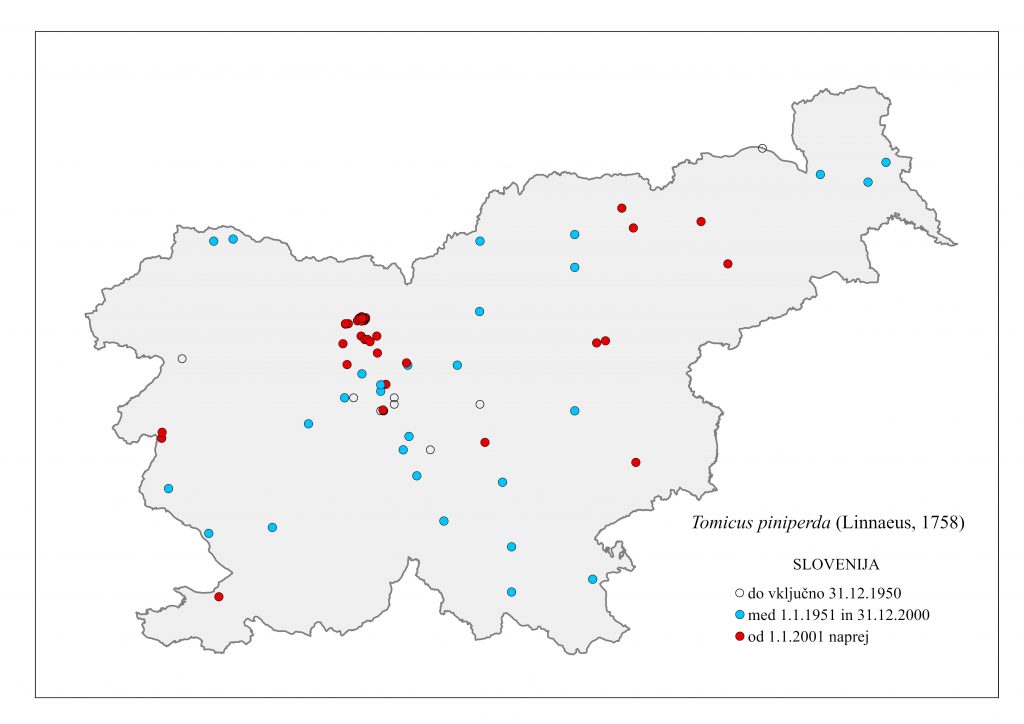
Figure 45: Tomicus piniperda, distribution map according to historical and recent data
Ecology and presence in Slovenia
A cold-climate species distributed in the pine forests of Eurasia, North Africa, the Nearctic and the Orient. Siegel (1866) states that the species was “more common in Carniola, in the pine forests”. The species is a polyphagous in continental pines, mainly on Pinus sylvestris and P. nigra, but attacks on P. pinaster have also been reported, and less frequently on Pinus mugo, P. koraiensis, P. thunbergiana, P. In Slovenia, the species is present in all regions, inhabiting P. sylvestris, P. nigra and, less frequently, P. strobus (Figure 45). In a few sites in Primorska and in the Slovene part of Istria, where the species was determined on the basis of the tunnel system on P. nigra, it may be a related species to T. destruens. They bore longitudinal, single-arched, up to 16 cm long maternal tunnels, which may have a tap-shaped form due to the slanted entrance channel. The borehole is usually surrounded by a ring of resin. The larval tunnels are very long and may intersect. Adult T. piniperda measure 3.5-4.8 mm in length (Figure 44). It is clearly distinguished from T. minor by the smooth ‘shadow furrow’ at the end of the elytra. A thick-barked species, the maternal tunnels are located at breast height and in the lower parts of the adult trees. Similar to T. minor, it maturity feeds in the twig piths in the crown. Twigs and shoots therefore break off and are often found under trees. Secondary and primary species.

